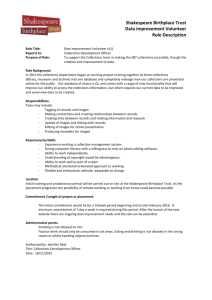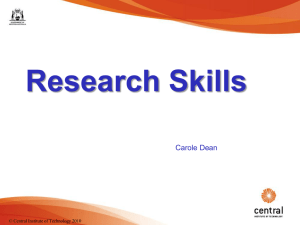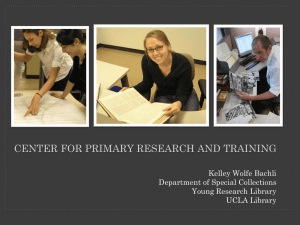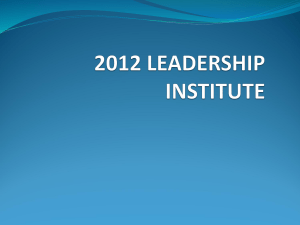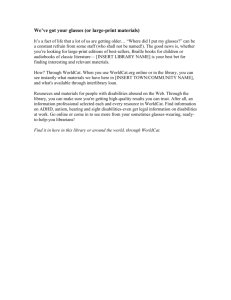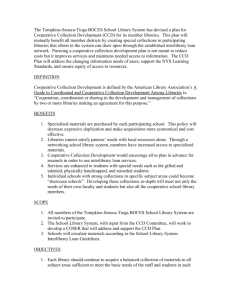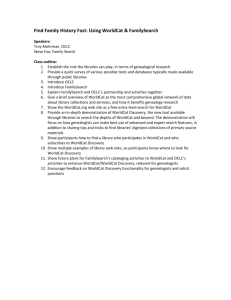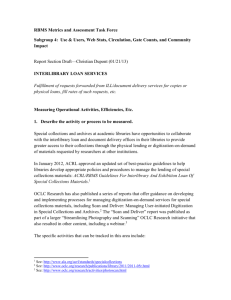New Video Script
advertisement
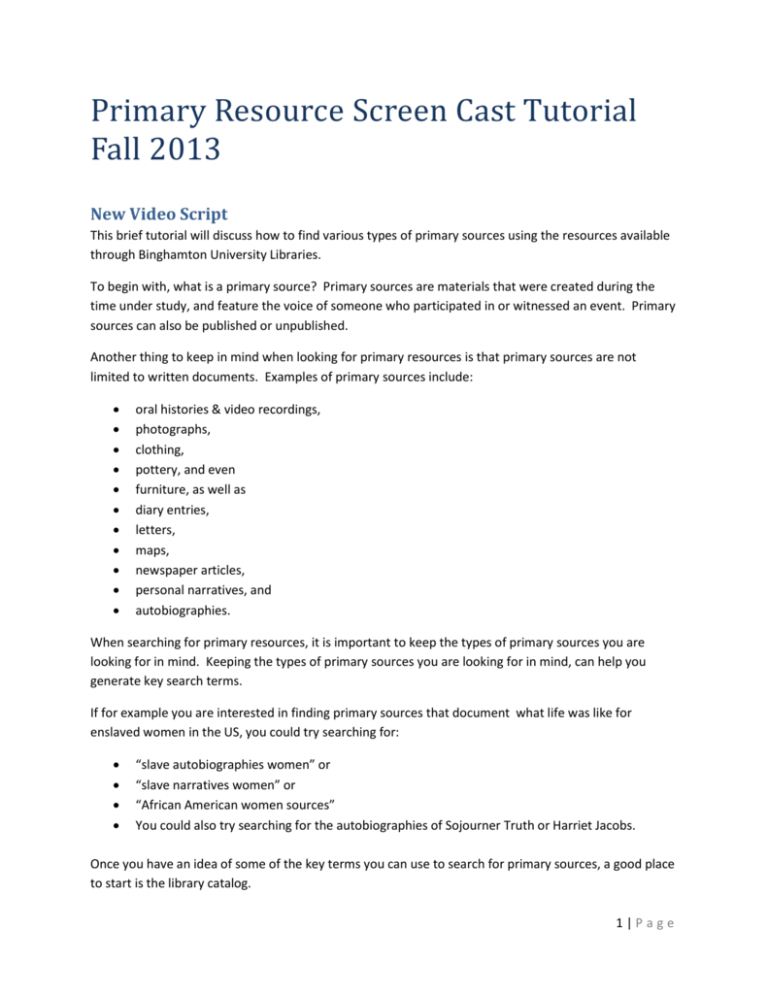
Primary Resource Screen Cast Tutorial Fall 2013 New Video Script This brief tutorial will discuss how to find various types of primary sources using the resources available through Binghamton University Libraries. To begin with, what is a primary source? Primary sources are materials that were created during the time under study, and feature the voice of someone who participated in or witnessed an event. Primary sources can also be published or unpublished. Another thing to keep in mind when looking for primary resources is that primary sources are not limited to written documents. Examples of primary sources include: oral histories & video recordings, photographs, clothing, pottery, and even furniture, as well as diary entries, letters, maps, newspaper articles, personal narratives, and autobiographies. When searching for primary resources, it is important to keep the types of primary sources you are looking for in mind. Keeping the types of primary sources you are looking for in mind, can help you generate key search terms. If for example you are interested in finding primary sources that document what life was like for enslaved women in the US, you could try searching for: “slave autobiographies women” or “slave narratives women” or “African American women sources” You could also try searching for the autobiographies of Sojourner Truth or Harriet Jacobs. Once you have an idea of some of the key terms you can use to search for primary sources, a good place to start is the library catalog. 1|Page Starting from the Binghamton University Libraries’ home page, click on the ‘Catalog’ tab in the ‘connect, discover, create’ box. To begin your search for books and other published sources, all you have to do is enter your key terms in the search box and click ‘search’. If instead of searching published sources, you would like to search for unpublished sources, you can search the Special Collections. To search Special Collections – in the catalog change the search option from “Full BU Catalog” to “Special Collections” in the drop down menu. For more information and help with the Special Collections, be sure to check out the Special Collections tab on the University Library main page and click trough to the Special Collections website. If after searching the catalog and special collections you still can’t find anything, you may want to see if other libraries have primary resources you can borrow using WorldCat and interlibrary loan. WorldCat can be accessed through the Catalog tab on the Libraries’ main page. Once you are in WorldCat, try similar keyword combinations that you used to search the catalog and special collections. On the results page notice the option to use the tabs running across the top to view results by resource types. Once you select a resource use the Get it@ BU link to request to borrow the book from another library for free through interlibrary loan. You can also use WorldCat to see what libraries have archival materials in their special collections. If the library is nearby, consider contacting them to arrange a visit, as most special collections libraries will not loan material via interlibrary loan. Other online resources at your disposal include digitized special collection materials. Many of these online collections can be accessed through the database tab on the main library page, and by browsing databases by history. Particular highlights include: the American Memory Project of the Library of Congress, CQ Historic Documents, the Gerritsen Collection of Women’s History, the Making of America, and Women & Social Movements in the US. Another thing to consider when searching for primary resources is time period. If your event has occurred within the last 300 years or so – consider searching for newspaper and other periodical articles. You can browse relevant databases by clicking on the “current events & news” link. The libraries have a number of great resources that can help you find these sources whether it be a digitized image of an article from the New York Times Historic Backfile, the plain text of a recent newspaper using Lexis Nexis, or the microfilm version of a paper that you can locate in the Catalog or WorldCat. Finally, keep in mind that primary research doesn’t have to be about historical events. Don’t be shy about using YouTube to look for footage of the 2012 presidential debates if you’re working on contemporary American elections. Or you could always interview someone you know who voted in a swing state. There are plenty of options! As always if you want to learn more about other places to look for primary resources, or just have a question, you can click on the ‘Ask a librarian’ link that can be found at the top of every Binghamton University library page. 2|Page



